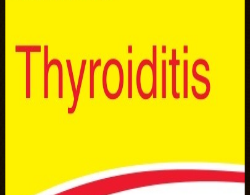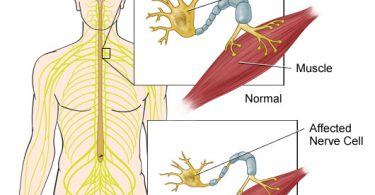Introduction
Erectile Dysfunction (ED), is the inability to attain or sustain an erection satisfactory for sexual intercourse (1). When a patient presents such a complaint, the clinician has to ensure that there is no confusion with infertility, complete impotence, where there has never been an erection; or even premature ejaculation which may have other causes such as anxiety, lack of technique, etc.
There is a lot of pressure on the sexual performance of men as never before. There are several factors that contribute to this pressure, one being the sexual emancipation of women. This carries the issue of performance anxiety and the various manifestations of sexual unfulfilment, which many claim is a significant factor in the disturbingly high rate of suicide among young men(2). Although ED does not constitute grounds for divorce in terms of the law, many couples have found it to be a complicating factor in the misunderstandings that leads to divorce.
Aetiology
Most ED is related to vascular, neurologic and hormonal disorders. Drug use, and sometimes psychological disorders are also causes(1). The latter statement is consistent with the view that ED is almost always secondary. More than 80% of secondary ED has an organic aetiology. In determining whether the sexual dysfunction is exclusively due to a general medical condition, the clinician must first establish the presence of the general medical condition(3).
The clinician must further establish that the sexual dysfunction is aetiologically related to the general medical condition through a physiological mechanism. A further challenge to the clinician is whether ED is the prominent feature of the case, or whether it is overshadowed by the underlying problem. It often happens that the patient presents the general medical condition without mentioning the sexual dysfunction unless the clinician probes further and establish the connection.
Diabetes Mellitus
Diabetes Mellitus (DM)is an abnormal metabolic state in which there is glucose intolerance due to inadequate insulin action. Diagnosis is based on the clinical demonstration of glucose intolerance(4).Two types of Diabetes mellitus are defined according to clinical settings in which they occur. In Type 1 (Insulin Dependent Diabetes Mellitus), there is wasting of body tissue in spite of high food intake. In contrast, Type 2 (Non- Insulin Dependent Diabetes Mellitus) commonly affect the obese, and tends to occur in middle age.(5).
In spite of there being two types, the most prevalent symptoms and signs of DM are; Urinary Frequency, Polyuria, Polydipsia, weakness and fatigue in patients who are dehydrated, and a change of mental status. Some patients experience weight loss, nausea and vomiting, and blurred vision. Fungal infection may also result from prolonged states of hyperglycaemia(6).
While this article’s focus is in the treatment of ED due to Diabetes Mellitus, the clinician should not overlook other causes as mentioned above. It is known that DM is one of the leading causes of ED(1).It is also a known fact that 25% of male diabetics have problems with sexual functioning(7). Clinical thinking has always advocated that once the underlying cause of the problem is treated, the problem is resolved. This is not the case with sexual dysfunction due to DM. The author explores homoeopathic treatment with remedies that have demonstrated efficacy in the treatment of sexual dysfunction while at the same time helping to manage the blood glucose levels of the subjects.
Homeopathic Treatment
A clinical approach to the treatment of Diabetes Mellitus offers a good demonstration of the Law of Similar at play. In this approach, the clinician has to match the symptoms of the patient to those of the remedy in as far as the diabetes is concerned. At the same time (s)he has to match the symptoms of the same patient to those of a remedy for erectile dysfunction. The totality of the symptom picture from this patient should be found in the same remedy. Put in simple words, the remedy has to display symptoms of Diabetes Mellitus, and at the same time, those of the Sexual Dysfunction. Such a remedy would be one that has an elective affinity for the organs of sugar metabolism and the male generative organs.
A number of remedies are discussed in this article. This is because there are individual variations in the presentation of the disease; due to constitutional differences of subjects on the one hand, and also due to physiological differences of the causes of diabetes mellitus. In this paper, the remedies discussed give a general picture of the patient, the symptoms of diabetes for the remedy in question, and then the symptoms of ED of the same remedy.
Uranium Nitricum
Uranium Nitricum is indicated when diabetes mellitus co-exist with hypertension and heart failure. Anyone of these three conditions is capable of causing ED in any individual. With the three conditions together in one individual, Sexual Dysfunction is almost always ensured.
The patient who needs Uran-n complains of copious urination, with urine that smells fishy. It is aggravated mainly at night. He has excessive thirst, nausea and vomiting. His appetite is great; eating is followed by bloating of the abdomen and flatulence. He is emaciated; has ascites and is debilitated.
The generative organs feel cold, relaxed and are sweaty.
Lycopodium Clavatum
Generally Lycopodium is indicated in deep-seated, progressive, chronic disease. It would be indicated in Diabetes where there is emaciation accompanying other typical diabetic symptoms in a Lyc. patient, such as:
Dryness of mouth, throat and tongue without thirst for water.
There is a desire for sweet things and warm drinks.
The polyuria is predominantly at night; the urine may be red with sediment.
Appetite is usually absent, or he may be hungry to the extent of waking up at night to eat. He often complains of heartburn, sour eructations and flatulence.
On the sexual sphere, Lyc. more often, has erection failure when he is with his wife. He performs relatively better with a new partner. Although he has a strong sexual desire, he suffers from incomplete erections; sometimes falling asleep during an embrace. Diminished sexual power is mainly due to cold, relaxed sexual organs.
Iodium
The Iodine patient is the one suffering from profound debility. He emaciates to a skeleton despite a voracious appetite and eating well. In this patient, both the thirst and appetite are increased considerably; he feels better from eating.
The slightest effort induces profuse perspiration. There is frequent and profuse urination; the urine is dark yellowish-green and thick.
Furthermore, the patient who needs Iodine suffers from atrophy of the testicles, when all other glands enlarge, eg: the prostate gland. This atrophy is the factor associated with the loss of sexual power.
Phosphoricum Acidum
The Ph-ac. patient has a pale sickly complexion. His hair has turned grey. He has a hopeless, haggard look. His eyes are sunken and surrounded by blue rings. His state of debility is attributed to loss of body fluids and the effects of chronic grief. He has profuse urination of clear, watery urine, especially at night. It tends to be milky at times.
Ph-ac. suffers from seminal emissions without erections. He is debilitated from loss of body fluids. The patient feels depressed and apathetic. He has a history of sexual excesses. Semen is discharged without an erection or shortly after erection. He experiences dragging pains in the testicles.
Argentum Metallicum
Arg-met is indicated for Diabetes Mellitus that is concomitant with joint problems, and complicated by Sexual Dysfunction. This is particularly in view of its affinities for the joints and the sex organs. It has affinities particularly for the small blood vessels; closing them up; hence its indications for sexual dysfunction.
The urine is profuse, turbid and has a sweet odour. There is frequency of urination and polyuria. The subject emaciates gradually; he is easily worn-out; forcing him to lie down.
He has seminal emissions without sexual excitement or erection. There is atrophy of the penis and crushing pains in the testicles.
Phaseolus Nanus
Phase has an elective affinity for the heart and the prostate gland. Boericke describes it as being indicated for diabetes that is accompanied by heart symptoms such as “fearful palpitations and a feeling that death is approaching”. There is oedema of the extremities with irregular action of the heart.
Clinically, prostate disease, heart disease and diabetes are factors known to individually contribute to sexual dysfunction. On the basis of “Like Cures Like”, it is not surprising that Phase has been found to be effective in the treatment of ED due to Diabetes Mellitus. The remedy is indicated for all three conditions in the same person, symptoms agreeing.
Coca
Coca is regarded as a specific remedy for Erectile Dysfunction due to Diabetes mellitus. Although many practitioners can back up the latter statement with clinical data, not many authorities have written about their experience with this remedy, nor is it well documented in the various works of Materia Medica.
The Diabetes symptoms recorded are:
Frequency of micturition
Bad effects of alcohol and tobacco Loss of appetite
The most important symptom that always comes up implying loss of libido is the sensation “As if the penis were absent”
Moschus
Moschus, like Coca, has been acclaimed for curing Sexual Dysfunction due to diabetes. Lippe describes it as having special effects on the sexual organs and nerves of motion.
Profuse urine with a strong odour; great thirst and emaciation.
Debility that is felt more at rest than during motion.
Vertigo on least motion
The Materia Medica quotes that its Impotence is associated with Diabetes. There is violent desire and intensive sexual excitement with involuntary emissions of semen; and poor performance. In extreme cases, there is total loss of sexual desire.
Conclusion
While conventional medicine will help to control the diabetes, complications that arise as a result of the disease, often need a second remedy, more often, with undesirable sideeffects. The advantage of employing homoeopathic treatment is, among others, to treat holistically, i.e treating the disease with its cause, or other co-existing medical condition and to minimise side-effects that may have been experienced with other conventional medicines. It is very rare to identify a conventional remedy that would be indicated for the disease as well as the co-existing medical condition.
References:
- Beers, M.H., Porter, R.S., Jones, T.V., Kaplan, J.L., Berkwits, M. (2006), The Merck Manual, p1948. Merck Research Laboratory. United States of America.18th Edition
- Murtagh, J. (2004), General Practice, McGraw-Hill, Australia.3rd Edition
- Frances, A., Pincus, H.A., First, M.B. (2000), Diagnostic and Statistical Maual of Mental Disorders, American Psychiatric Publishing Inc.VA.4th Edition.p555
- Underwood, J.C.E. (2004), General and Systematic Pathology, Churchill Livingstone, Sheffield. 4th Edition
- Seely, R.R., Stephens, T.D., Tate, P. (1995), Anatomy and Physiology, Mosby, Missouri.3rd Edition, p591
- Beers, M.H., Porter, R.S., Jones, T.V., Kaplan, J.L., Berkwits, M. (2006), The Merck Manual, p1276. Merck Research Laboratory. United States of America.18th Edition
- Macleod, A.F. Diabetic Neuropathy. Medicine International, Southern African Edition 1989; 65:2700-2703
- Materia Medica:
- Boericke, W. (1927) Pocket Manual of Homoeopathic Materia Medica. Boericke & Tafel, Inc. Philadelphia. Ninth Edition
- Von Lippe, A (no date) Redline Symptoms of the Materia Medica, A.B. Publishers, Calcutta. New Edition.
- Morrison, R. (1993) Desktop Guide, Hahnemann Clinic Publishing. California
- Clarke, J.H. (1962) Dictionary of Practical Materia Medica, Health Science Press. Sussex, England.
- Neatby, E.A., Stonham, T. G (1948) A Manual of Homeo- Therapeutics, Staples Press Ltd. London.3rd Edition
- Cowperthwaite, A.C. (1970) A Textbook of Materia Medica and Therapeutics. Haren & Brother. Calcutta. Sixteenth Edition.
- Ward, J. W. (1939), Unabridged Dictionary of Sensations “As If”, Wobbers, Inc.





